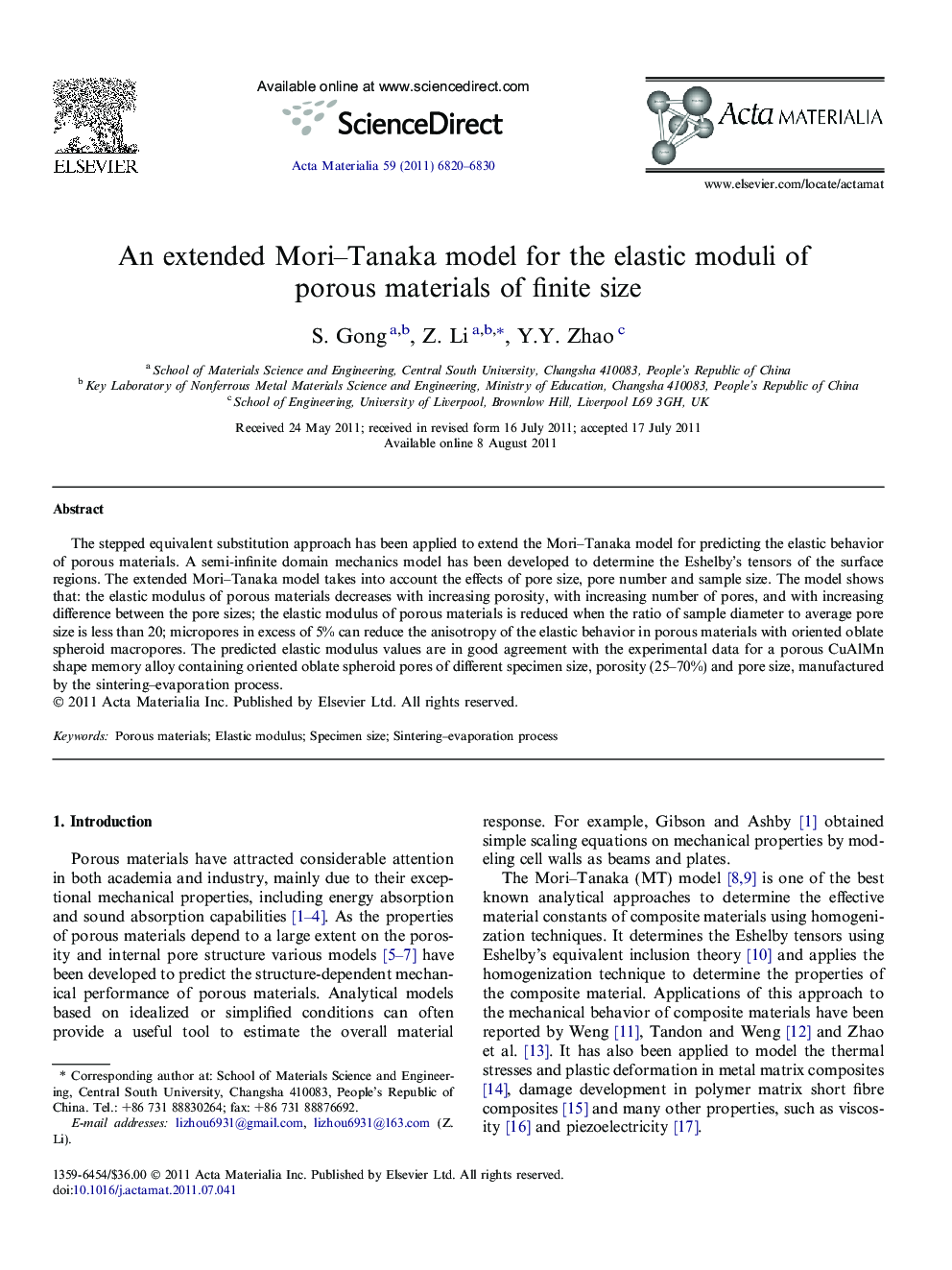| Article ID | Journal | Published Year | Pages | File Type |
|---|---|---|---|---|
| 1446914 | Acta Materialia | 2011 | 11 Pages |
The stepped equivalent substitution approach has been applied to extend the Mori–Tanaka model for predicting the elastic behavior of porous materials. A semi-infinite domain mechanics model has been developed to determine the Eshelby’s tensors of the surface regions. The extended Mori–Tanaka model takes into account the effects of pore size, pore number and sample size. The model shows that: the elastic modulus of porous materials decreases with increasing porosity, with increasing number of pores, and with increasing difference between the pore sizes; the elastic modulus of porous materials is reduced when the ratio of sample diameter to average pore size is less than 20; micropores in excess of 5% can reduce the anisotropy of the elastic behavior in porous materials with oriented oblate spheroid macropores. The predicted elastic modulus values are in good agreement with the experimental data for a porous CuAlMn shape memory alloy containing oriented oblate spheroid pores of different specimen size, porosity (25–70%) and pore size, manufactured by the sintering–evaporation process.
